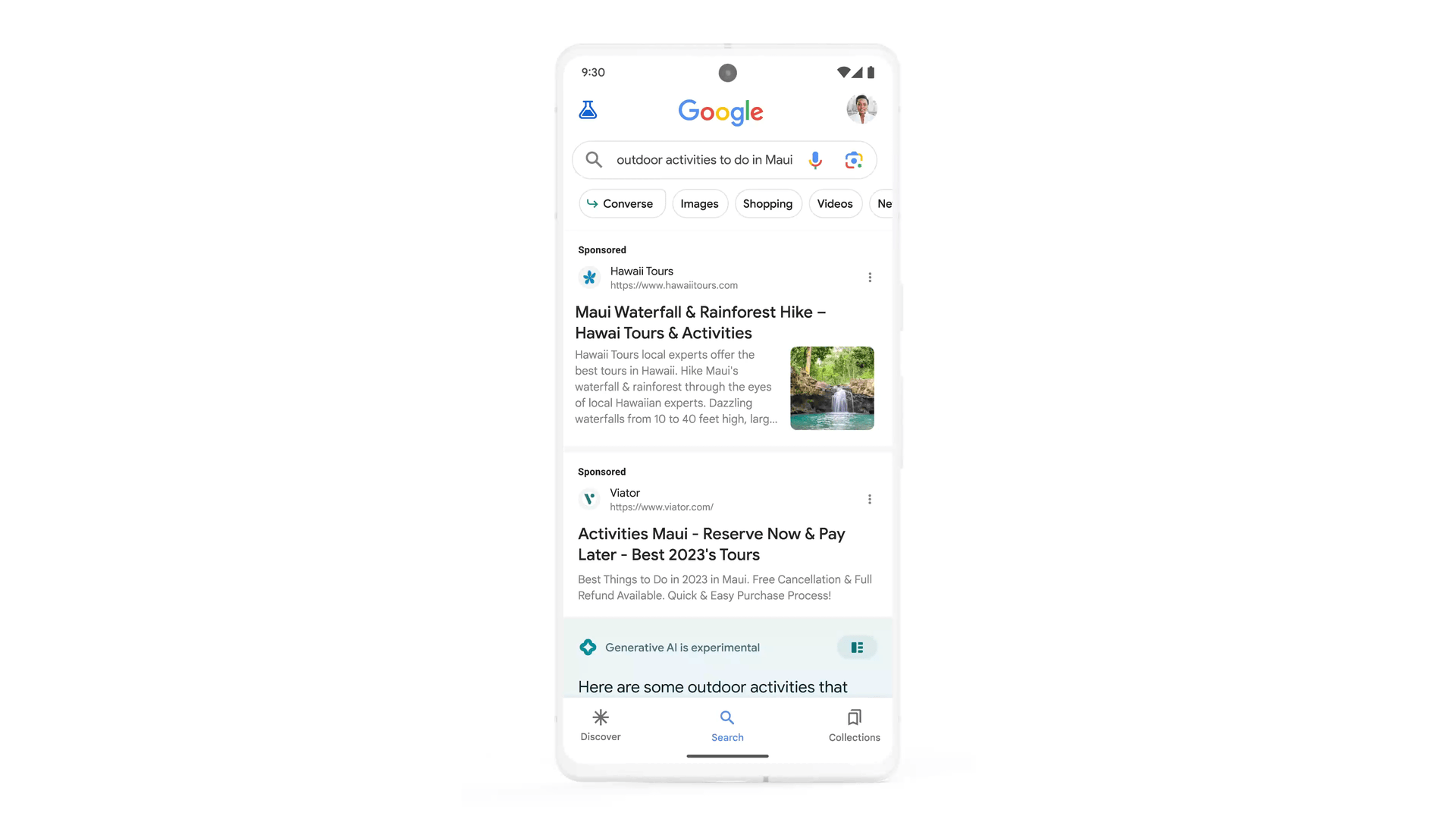In today’s digital landscape, where online visibility can make or break a business, the interplay between search engine visibility and user experience holds paramount importance for ecommerce businesses and websites alike. The ability to connect with potential customers and users hinges on the ease with which they can access relevant information. As search engines continually evolve to refine their algorithms and offer more user-centric results, it’s crucial for businesses to adapt and optimise their content accordingly. In line with this, Google’s recent update pertaining to Frequently Asked Questions (FAQs) and How-To content has brought about a transformative shift in how information is presented on the search engine results pages (SERPs).
Understanding Google’s FAQs and How-To Update
Previous updates revolved around optimising structured data markup—a vital component in helping search engines comprehend the context of web content. By revamping the handling of FAQs and How-To content through structured data, Google aimed to enhance the quality of search results. This, in turn, enabled users to make informed decisions more efficiently and with greater confidence.
That being said, FAQs and the related schema were widely used by SEOs to achieve the rich snippet positions. This was generally considered an SEO first opportunity, with few people ever stopping to ask the question “do users actually want to see my FAQs in this SERP?”. Achieving FAQ positions was relatively quite easy, and many people realised this. As a result, FAQ schema was pushed out for every page possible because it offered more “real estate” within the SERPs, giving your brand more visibility, with little to no consideration for improving the user journey and experience.
Google’s latest update marks a significant milestone in the realm of online visibility and user experience. The update centres on the way FAQs and How-To content are showcased in search results, underscoring Google’s commitment to delivering information that is both relevant, accurate, and concise. In essence, this update seeks to further expedite users’ access to essential details directly from the SERPs, eliminating the need for them to navigate through numerous pages to find answers, whilst placing an emphasis on reliable and trustworthy sources.
“Google has stated that the FAQs and rich results will only be shown for “well-known, authoritative government and health websites.”
This means Google will be reducing the display of rich results in its search results. They intend to show fewer FAQ rich results and exclude How-To rich results from mobile and tablet devices.

Organic SERP changes to FAQs results
The Update: Google has stated that rich results will only be shown for recognised government and health websites. For all other websites, rich results will no longer be displayed regularly. However, websites selected by Google to show FAQs are still determined through automated algorithms.
The Impact: It is likely that brands will see a decrease in impressions and clicks for content that was surfacing and performing well in the rich results of Google. However, this may lead to an increase in click-through and conversion rates. This decrease in visibility from rich results could reduce the impact of organic search for brand awareness.
The Action: Google emphasised that website owners should not remove structured data from their sites. Structured data that is not being used doesn’t cause any problems for search but also does not have any visible effects in Google Search. So, continue keeping your content relevant, up-to-date, and providing accurate and useful information for your users. The content may not appear in rich results, however it will still be indexed and rank well provided you meet Google’s E-E-A-T criteria.

Organic SERP changes to How-To results
The Update: Google has stated that How-To rich results from How-To structured data will only be shown for desktop users and not for mobile users. To have How-To rich results displayed on desktop, the mobile version of the website must include the appropriate markup.
The Impact: This update will impact the visibility and traffic of websites, particularly from mobile users. For mobile-first websites that receive a high percentage of impressions from rich results, you would anticipate a significant decrease in total impressions and clicks. Equally, brands that provide guides, instructions, and step-by-step directions, will see a drop in performance, particularly traffic and impressions from mobile users.
The Action: To continue to appear in rich results on desktop, you must ensure the appropriate schema markup is in place on the mobile version of the site. As Google crawls and indexes websites with a mobile-first approach, it is paramount that the appropriate markup is included on mobile to be able to still surface for desktop users.

Why has Google released this update to FAQs and How-To’s?
Although we never truly know why Google does what they do, we can speculate and hypothesise based on our knowledge of the industry and the changes we see happening in the world today. A key goal and emphasis that Google has been working towards over the last decade (if not more) is quality content. With regular algorithm updates that further push their E-E-A-T considerations and a significance being put on eradicating fake news and false information, it is likely that this update is to further align with those overarching goals. Ensuring that all FAQs and How-To rich results are as accurate and helpful for users as possible.
AI Generated FAQs and How-Tos
In light of the emergence of AI, ChatGPT, and similar Large Language Models (LLMs), the process of crafting FAQs and How-Tos has never been easier. It seems as though all it takes is formulating a prompt for ChatGPT, and the task is completed effortlessly. However, a crucial caveat lies in the quality control of the content that ChatGPT generates. Failing to diligently assess and verify the output from ChatGPT can lead to dire consequences. It’s worth noting that ChatGPT has the tendency to confidently fabricate information and even succumb to flights of imagination, ultimately providing content of dubious credibility.
Therefore, it’s conceivable that Google has discerned a sudden surge in the production of FAQs and How-Tos across various websites, a considerable portion of which may very well be the product of ChatGPT’s imaginative capabilities.
The Emergence of SGE
With new technologies and breakthroughs within the world of AI, Google has been rolling out its revolutionary Search Generative Experience (SGE). This new way of search will transform the way in which information is organised, and help users to navigate through to find the answer they need more easily. In relation to this new way of searching, Google have stated:
“… we’re now taking more of the work out of searching, so you’ll be able to understand a topic faster, uncover new viewpoints and insights, and get things done more easily.”
Google 2023
Whether you’re looking to make a purchase, or asking a question to learn more on a topic, the way in which SERPs will be displayed will have you fully covered. For example, when searching, Google will provide an AI-powered snapshot of key information to consider, with links to discover more. Following this you will see suggested next steps, including prompts such as “ask a follow-up question” and AI generated questions. When you click on these, it takes you to a new conversational mode, where you can ask Google more about the topic you’re exploring, carrying over context from question to question.
What this means for SERPs is that there will be more space taken up with the new SGE results, and therefore less space available for FAQs, How-Tos, and other rich snippet content. As a result, Google is proactively reducing the “real estate” of these rich snippets. Although only speculative at this time, the future of search is certainly changing, and the likelihood is that Google is making way for new technologies. For more information, feel free to read our article covering our first impressions of SGE.

What does this update mean for the future of organic?
Similarly to most updates Google has pushed out in recent years, this update aligns with the focus on quality content. The significance of Expertise, Experience, Authoritativeness, and Trustworthiness (E-E-A-T) cannot be overstated when it comes to the organic performance of websites. Google’s emphasis on E-E-A-T underscores the critical role that these factors play in determining a website’s credibility and relevance. In an era where the digital landscape is saturated with information, users rely on search engines to deliver accurate and trustworthy content.
E-E-A-T serves as a litmus test for websites, ensuring that their content is not only well-informed but also backed by recognised experience and expertise. Authoritativeness establishes a website’s reputation as a reliable source, bolstering its standing in the eyes of both users and search engines. Trustworthiness is the cornerstone of user satisfaction, as it promotes confidence and encourages user engagement. By prioritising E-E-A-T, Google is fostering an online environment where authenticity prevails, elevating websites that consistently uphold the highest standards of expertise, experience, authoritativeness, and trustworthiness in their content.
As a result, it’s conceivable that Google will be incentivising the presentation of rich snippets from sources that exhibit heightened authority and trustworthiness—those long-established and dependable entities held in high regard by Google. Consequently, this could usher in a scenario where rich results predominantly favour larger, renowned brands that meticulously prioritise their E-E-A-T considerations. However, this recalibration might lead to a reduction in the prevalence of rich results within the SERPs overall. For instance, the days of encountering a multitude of FAQs—possibly six or more—upon a generic query search could wane, leaving space for only 2 to 4 FAQs to emerge. These select few will likely hail exclusively from larger, well-established brands, which could potentially render the ascent for smaller businesses slightly more arduous.

Final thoughts and where we’re heading next
At the heart of Google’s update lies a desire to best service users with relevant, trustworthy and accurate information. With this updated presentation on SERPs, the potential for organic traffic could fluctuate considerably. By reducing the ability to present pertinent information upfront, businesses and websites will struggle to attract users seeking quick answers to their queries. However, Google is very user-first focused and always looking for ways to best service their users. This means that they believe this update will be providing a better service for their users, which in turn should lead to a better user experience for those that do land on your website.
It remains intriguing to observe the intricacies of Google’s approach towards presenting rich results tailored to brand-specific queries and gauging their performance within the SERPs. As businesses navigate this landscape, our steadfast commitment lies in the ongoing creation of content that embodies qualities of usefulness, informativeness, and user-centric value. Our efforts to optimise user experiences will invariably provide results, translating into enhanced organic performance and the prominence of our content in SERPs. This update casts a wide net across industries rather than singling out a specific sector, placing competitors on a level playing field with shared challenges. Yet, by consistently delivering high-calibre content, we stand to gain from improved organic rankings and heightened user engagement, underscoring the rewards of prioritising quality.
In conclusion, Google’s recent update revolving around FAQs and How-To content reflects the ever-evolving landscape of search engine optimisation and user-centricity. As businesses adapt to these changes, the symbiotic relationship between search engine visibility and user experience will undoubtedly foster growth, equipping businesses with the tools to thrive in the digital age.



